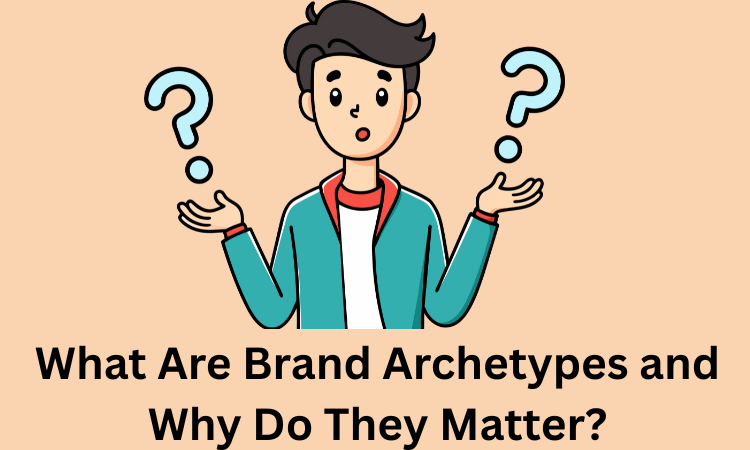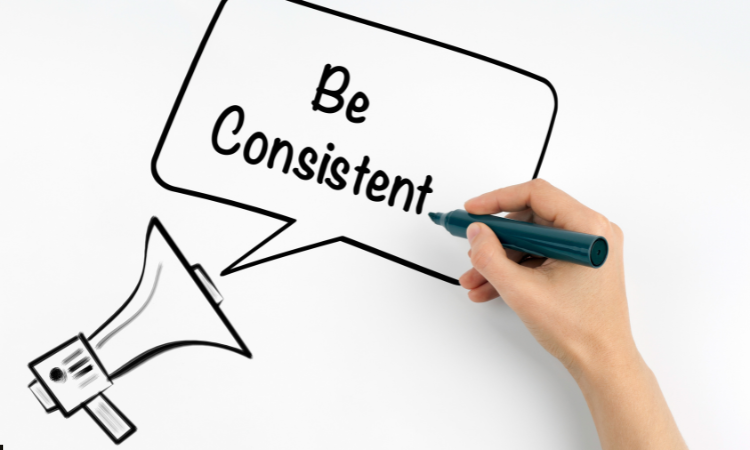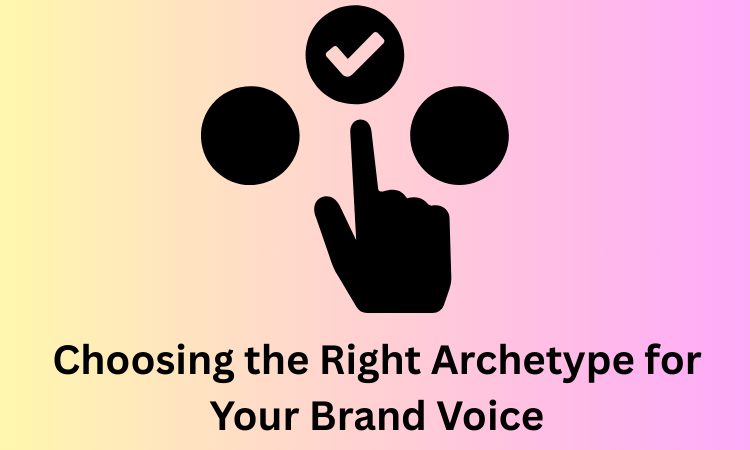Content marketing becomes stronger when your brand speaks with a clear and relatable voice.
The role of brand archetypes in content marketing is to give that voice a solid personality.
When your brand feels like a real character, people connect emotionally and remember your message.
These archetypes help guide your tone, storytelling, and content choices, making everything feel more focused and engaging.
What Are Brand Archetypes and Why Do They Matter?
Brand archetypes are personality frameworks that help businesses define their voice.
They are based on common human behavior patterns like the Hero, Creator, or Caregiver.
Each archetype tells a unique story that shapes the brand’s tone, visuals, and messages.
When a brand aligns with an archetype, it becomes easier for people to understand and connect with it, building stronger recognition and loyalty.
In content marketing, archetypes create consistency across blogs, videos, and social media.
This makes the brand feel familiar and trustworthy. Without an archetype, content can seem scattered.
With one, the brand’s voice stays focused, helping to educate, entertain, and inspire.
Overall, archetypes make brands feel more human and build lasting emotional connections.

Types of Brand Archetypes
The Hero
The Hero archetype represents bravery, inner strength, and a relentless drive to overcome challenges. Brands with this archetype inspire people to overcome obstacles and achieve greatness through motivation and bold actions. Example: Nike.
The Caregiver
Caregiver brands focus on nurturing, compassion, and support. They build trust by showing kindness and helping others, aiming to protect and care for their audience. Example: Johnson & Johnson.
The Explorer
Explorer brands value freedom, adventure, and discovery. They encourage curiosity and new experiences, appealing to those who seek independence and want to explore the world. Example: The North Face.
The Rebel
Rebel brands challenge norms and traditions, standing for boldness and revolution. They appeal to people who want to break rules and push boundaries to create change. Example: Harley-Davidson.
The Lover
Lover brands emphasize passion, beauty, and emotional connection. They focus on relationships, intimacy, and creating a sense of desire and belonging. Example: Chanel.
The Sage
Sage brands represent wisdom, knowledge, and truth. They guide people with thoughtful insights and reliable information to help them make informed decisions. Example: Google.
The Innocent
Innocent brands symbolize purity, simplicity, and optimism. They promote happiness, safety, and honesty, appealing to people who value trust and goodness. Example: Dove.
The Jester
Jester brands bring joy, fun, and humor to their audience. They aim to entertain and lighten moods, creating memorable and playful experiences. Example: Old Spice.
The Everyman
Everyman brands are down-to-earth, relatable, and approachable. They connect with ordinary people by being friendly, honest, and inclusive. Example: IKEA.
The Creator
Creator brands focus on innovation, imagination, and originality. They inspire people to express themselves and bring new ideas to life through creativity. Example: LEGO.
The Ruler
Ruler brands represent leadership, control, and responsibility. They offer stability, structure, and confidence, appealing to those who value authority and order. Example: Mercedes-Benz.
The Magician
Magician brands symbolize transformation, vision, and wonder. They create magical experiences that inspire change and make dreams come true. Example: Disney.
Best Practices for Using Brand Archetypes in Content Marketing
Using brand archetypes in content marketing can bring focus and emotional depth to your messaging, but it requires careful strategy to get it right. Here are some best practices to make the most of archetypes:
Clearly Define Your Brand Archetype
Before creating any content, identify the archetype that best matches your brand’s core values and mission. This could be the Hero, Caregiver, Explorer, or any other archetype. Defining this helps you maintain consistency in your communication and shapes your brand’s personality.

Align Content Style and Tone with the Archetype
Once you know your archetype, ensure every piece of content reflects its unique voice. For example, a Hero archetype uses inspiring, motivational language, while a Caregiver’s content is warm and supportive. Matching tone and style keeps your audience connected and sets clear expectations.
Use Storytelling that Reflects Archetype Traits
Stories are powerful tools in content marketing. Craft stories that highlight the traits of your chosen archetype. If you are an Explorer brand, share stories about discovery and adventure. This helps your audience relate emotionally and remember your brand better.
Maintain Consistency Across All Channels
Consistency is key. Make sure your archetype’s personality shines through on your website, social media, emails, and ads. This unified voice builds trust and recognition, making your brand feel more authentic and reliable.

Avoid Mixing Conflicting Archetypes
While some brands use a combination of archetypes, mixing too many or conflicting ones can confuse your audience. Stick to one main archetype and, if needed, complement it with a secondary one that fits naturally. This keeps your messaging clear and focused.
Regularly Review and Adjust Content
Brands evolve, and so do their audiences. Periodically check if your content still fits your archetype and resonates with your audience. Be ready to tweak your messaging slightly while staying true to your core archetype traits.
Use Archetypes to Guide Visual Content
Archetypes don’t just apply to words. Use them to shape your visuals too, colors, fonts, imagery, and design styles should all reflect your brand’s archetype. For example, a Rebel brand might use bold, edgy visuals, while an Innocent brand prefers soft and clean designs.
Train Your Team and Partners
Make sure everyone involved in content creation understands the brand archetype and its importance. This ensures consistency even when different people or agencies handle your marketing.
Measure Impact and Adjust Strategy
Track your content performance using analytics to find out what works best. Are audiences engaging more when you lean into your archetype’s traits? Adjust your approach based on data but keep the archetype as your guiding light.
Following these best practices, brands can create content that is focused, emotionally engaging, and consistent. This approach strengthens relationships with the audience and helps the brand stand out naturally in a crowded market.

How Brand Archetypes Help Shape Content Style and Tone?
A well-chosen brand archetype gives content its emotional direction. It helps decide how a brand should talk, what it should say, and how it should say it.
For example, if a brand follows the Sage archetype, its tone will sound thoughtful and wise. It will focus on delivering insights and guiding readers through knowledge.
On the other hand, a brand that follows the Jester will keep things light, fun, and entertaining. This difference matters because people connect with brands that speak to them in familiar ways.
A defined archetype acts like a compass for content style. It tells writers and creators what kind of words, metaphors, or stories to use.
It also influences design choices such as colors, images, and layouts. Over time, this consistency strengthens brand recognition. Customers begin to trust the tone and find comfort in its regular rhythm.
Without a guiding archetype, content risks losing direction or sounding off-brand. Every post might feel different, and that can confuse readers.
But with a strong personality guiding the message, the tone stays steady across platforms. In case it is an email, a video script, or a blog, the content feels like it comes from the same character every time.
Choosing the Right Archetype for Your Brand Voice
Picking the right archetype starts with understanding what your brand truly values and how you want people to feel when they interact with it.
This is not just about choosing a character you like. It is about finding the one that fits your brand’s purpose and audience expectations.
If your brand helps people learn, you may lean toward the Sage. If your goal is to inspire courage, the Hero might be a better match. Once you identify this central personality, it becomes easier to shape your content strategy around it.
Every piece of content should reflect the traits of that archetype. This choice helps set the tone and creates emotional alignment.
Your customers begin to connect with the brand on a personal level, as if it were a person they know. A clear archetype also helps you stand out from competitors.
When others are unclear or inconsistent, your brand remains steady. It builds trust over time and helps guide everything from headlines to campaigns.
The process of choosing may take time, but once done, it becomes the foundation for meaningful communication. It sets the direction for how your brand should behave in every piece of content you create.

How Brand Archetypes Improve Customer Connection?
Human beings naturally respond to stories and personalities that feel real. When a brand adopts an archetype, it becomes easier for people to relate to it.
Instead of coming across like a faceless company, the brand starts to feel more human. Customers connect with characters. They remember the Hero who encouraged them, the Caregiver who supported them, or the Jester who made them smile.
This emotional pull strengthens loyalty. When content speaks to feelings rather than just facts, it leaves a lasting impression. An archetype helps guide that emotional tone.
It shapes how the brand shows empathy, courage, humor, or wisdom. People tend to come back to a brand that seems to truly get them. Each interaction builds a deeper sense of connection.
The message starts to feel more like a genuine exchange than a sales pitch. With time, trust forms as the brand’s tone remains steady.
It becomes reassuring to know what kind of experience is waiting. That comfort builds connection. The result is not just better engagement, but deeper relationships.
When a brand keeps delivering messages that align with its chosen personality, customers feel seen. They start viewing the brand as part of their journey, not just a business.

Why BrandOut Believes a Clear Archetype is Key to Digital Marketing Success?
At BrandOut, we use brand archetypes to shape strong, relatable content strategies. A clear archetype gives your brand a personality that feels real.
Through digital marketing, this identity stays consistent across channels, helping you attract loyal customers, build trust, and stand out in a noisy, competitive online space.
The Bottom Line:
This article explains how brand archetypes can help your content feel more genuine and relatable.
When your brand speaks with a clear personality, it becomes easier to build trust with your audience.
Using archetypes brings consistency and meaning to your messages. If you want your content to connect deeply and make a lasting impression, applying this approach will be very helpful for your marketing effort.
Most Asked Questions:
What is the purpose of a brand archetype?
A brand archetype gives a brand a clear personality by using familiar character types.
It builds emotional connections with the audience, helping the brand feel more relatable and easier to remember.
Using an archetype guides the brand’s tone, storytelling, and messaging consistently across all platforms, which builds trust and loyalty over time.
What are content archetypes?
Content archetypes are common patterns or styles used in creating content. They help shape the way stories, messages, or information are presented to engage the audience better.
Examples include the Hero, the Caregiver, or the Explorer content styles. Using these archetypes helps brands connect emotionally and keep content consistent in tone and purpose.
What is an archetype in marketing?
In marketing, an archetype is a universal character or theme that represents a brand’s personality.
Marketers use archetypes to craft messages that resonate deeply with audiences by tapping into familiar emotions and stories.
This helps the brand stand out, feel authentic, and build stronger emotional bonds with customers.
What are the 4 main archetypes?
The four main archetypes often cited are: The Hero, who overcomes challenges; The Caregiver, who supports and nurtures;
The Explorer, who seeks adventure and discovery, and The Rebel, who challenges the status quo.
These basic types help brands define their identity and connect emotionally with their audience.
What is an archetype with an example?
An archetype is a typical character or symbol representing universal patterns in storytelling or branding.
For example, Nike uses the Hero archetype by inspiring people to overcome obstacles and achieve greatness.
This gives Nike a clear, motivating personality that connects emotionally with its customers.




